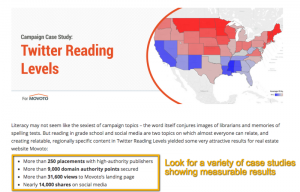— May 14, 2019
Legacy technology is like that old pair of jeans you wore as a teenager. “They are comfortable” was always your answer to any inquiry.
Move that anecdote onto a larger stage and you have a fairly accurate picture of why many organizations hold on to legacy technology—tools that are long outdated: comfort.
In a world of exponential change, legacy technology is trouble. Continuing to use outdated technology of all sorts is costly beyond the financial spectrum.
Legacy Technology Defined
A definition of legacy technology describes the term as “an old method, technology, computer system or application program, of, relating to, or being a previous or outdated computer system.”
This particular definition frames legacy technology in a negative light. There’s no getting around the fact that legacy technology is pervasive.
In more recent news, several organizations have experienced setbacks from legacy technology:
- Last year, Data Breaches compromised 15.1M patient records with 503 incidents.
- In late 2016, British bank Tesco shut down online banking in early November after 40,000 accounts were compromised, half by hackers for fraudulent purposes. Andrew Tschonev, technical specialist at security firm Darktrace, stated: “With attackers targeting everyone and anyone, today’s businesses cannot safely assume that it won’t happen to them.”
- In July 2016, Southwest Airlines canceled 2,300 flights when a router failed, delaying hundreds of thousands of passengers. The same issue grounded 451 Delta Air Lines flights weeks later.
- In November 2015, Orly Airport in Paris was forced to ground planes for several hours when the airport’s weather data management system crashed. The system was Windows 3.1.
Bad PR? Yes, but Much More Than That
Reputations are important, and high-profile incidents like these don’t create great headlines. But the reasons to move on from legacy technology stretch further:
Data breaches. As Tesco discovered, legacy technology is open to cyber crime. Vendor support is often nonexistent, which limits valuable upgrades. Furthering security risks, advantages of improvements in security measures are not easily accessible for old systems.
Expensive functionality. Revamping outdated technology can be an expensive proposition, but running outdated technology increases operating costs also. Old hardware versions lack modern power-saving technology and the systems’ maintenance is expensive.
Compliance penalties. Depending on your industry, legacy technology may not be in compliance. In the medical industry, outdated software will fail to meet compliance standards, such as the Health Insurance Portability and Accountability Act (HIPAA), resulting in severe financial penalties.
Customer loss. No matter the industry, offering outdated solutions and ideas derived from equally outdated technology will prompt customers to look elsewhere for better answers.
Unreliability. Many organizations hold on to legacy systems in the belief that the systems still work. If that’s not the case, consider what happens when something goes wrong, as seen in the detrimental examples above.
Perception issues. Leaders need to be aware of the message they’re sending to their employees. Consider how a younger employee who’s comfortable with technology might react to coping with the limitations of legacy technology. Aside from lost productivity, they may consider a new employer more willing to invest in current infrastructures.
“No” Can Be More Costly Than “Yes”
Replacing legacy technology is not entirely devoid of downsides, the most obvious being cost. Other deterrents include legacy replacement projects failing or the time and cost involved in system testing and end-user retraining.
But the question remains: Are you and your organization comfortable with the old, or are you identifying the Hard Trends that are shaping the future and embracing the new? Are you anticipating the need to invest and upgrade before tragedy occurs? There’s not one organization in the examples provided that doesn’t wish to go back and pre-solve the problems of outdated systems.
Before making any decisions, assess both Hard Trends and Soft Trends that affect your organization and industry. Consider the positive and negative impacts that replacing legacy systems may carry both internally and externally. Be certain that every element for the new system serves a well-defined business goal, now and in the future.
As I emphasize in my Anticipatory Organization Learning System, saying yes can be expensive, but saying no could be catastrophic.
Originally published here
Business & Finance Articles on Business 2 Community
(61)
Report Post







